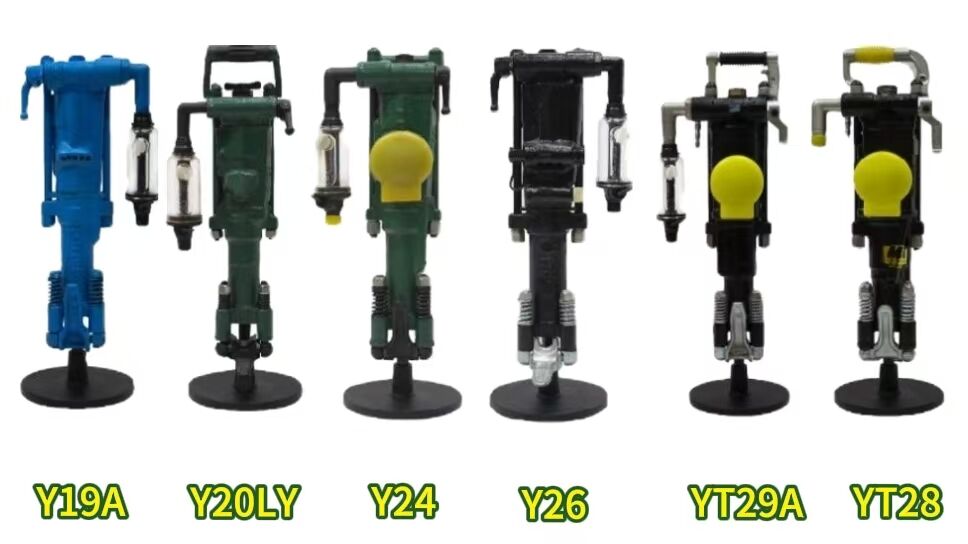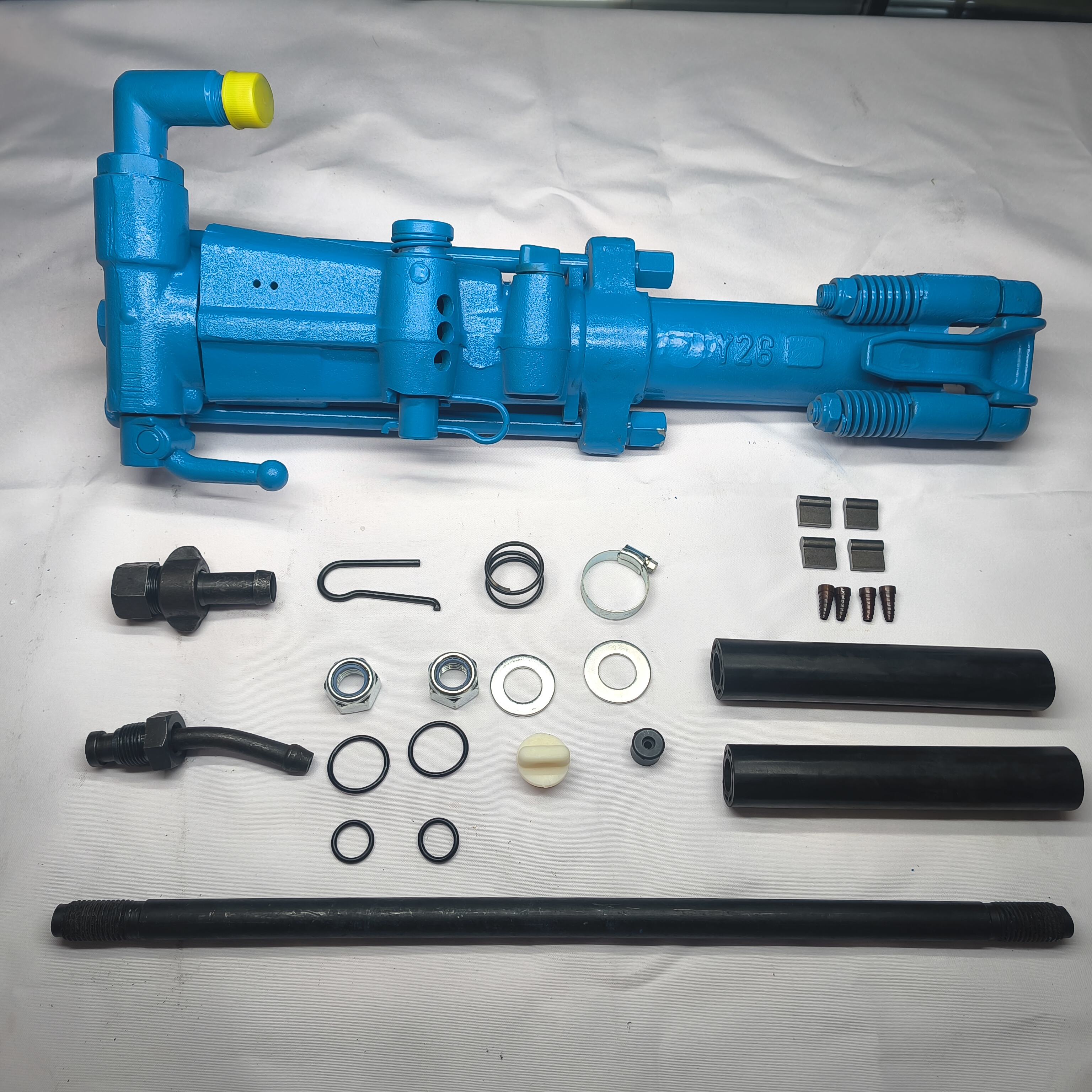How Heat Treatment Enhances Rock Drill Performance and Longevity
Rock drills operate in some of Earth's most punishing environments, making material durability non-negotiable. Controlled heat treatment processes transform drill steel at the atomic level, achieving the precise balance of hardness and toughness needed to withstand relentless mining workloads.
Understanding the Harsh Conditions Rock Drills Face in Mining Operations
Mining environments subject rock drills to multidirectional stresses exceeding 50,000 PSI (Mining Engineering Journal 2023), with tip temperatures reaching 650°C during continuous operation. Abrasive rock formations accelerate wear rates by 300% compared to standard construction drilling, demanding materials that resist both impact shattering and surface degradation.

The Science Behind Heat Treatment: Strengthening Microstructure for Durability
When we talk about heat treating steel, what happens is that the crystal structure gets transformed during three main steps - first comes austenitization, then quenching, followed by tempering. The quenching process actually forms this hard martensite structure inside the metal, which can reach hardness levels around 850 on the Vickers scale. After that initial hardening, tempering comes into play. This second step makes the material much less brittle, cutting down brittleness by roughly 40 percent, yet still keeping good wear characteristics intact. For drill bits working their way through tough granite rock formations, this combination works wonders. Drill heads made using this method stay sharp even after thousands of impacts, typically lasting well beyond 8,000 cycles before needing replacement.
Real-World Impact: Case Study from Australian Iron Ore Mines
A Tier 1 iron ore operator achieved a 58% reduction in drill bit replacements after implementing induction-hardened rock drills. Post-treatment analysis showed consistent carbide distribution across wear surfaces, extending mean time between failures from 72 to 174 operating hours (Mine Efficiency Report 2023).
Integrating Heat Treatment Early in Rock Drill Manufacturing for Optimal Results
Leading manufacturers now apply normalizing treatments during initial forging to eliminate residual stresses from casting. This preprocessing step improves final quench uniformity by 25%, reducing post-machining dimensional variances below 0.2 mm – critical for maintaining hydraulic hammer seal integrity during percussive drilling.
Improving Hardness, Wear Resistance, and Fatigue Resistance Through Controlled Heat Treatment
Quenching: Achieving High Surface Hardness in Rock Drills
When steel gets quenched, it's cooled down really fast after heating, which triggers what's called a martensitic transformation. This makes the surface super hard, reaching around 65 HRC. That kind of hardness is pretty much necessary when dealing with tough rock formations that wear things down quickly. Some recent research from 2023 showed something interesting too. Drill bits that went through the quenching process lasted about 38 percent longer while working on granite compared to regular ones that weren't treated. The whole quenching thing needs careful temperature management though. Steel has to stay hot between roughly 800 to 900 degrees Celsius before getting dunked in oil or some special polymer solution. Without this controlled approach, the metal tends to warp or develop tiny cracks we can't see right away but will cause problems later on.
Tempering: Balancing Wear Resistance with Toughness
While quenching maximizes hardness, tempering at 200–600°C reduces brittleness by 40–60% through controlled carbide precipitation. This achieves an optimal Rockwell hardness range of 55–60 HRC, where cutting efficiency is maintained without fracture under impact loads. Modern staged tempering preserves wear-resistant surfaces while developing shock-absorbing core structures, enhancing overall component resilience.
Enhancing Fatigue Resistance via Microstructural Stability
Controlled heat cycles produce homogeneous microstructures capable of enduring 50,000+ stress cycles in percussive drilling. Research shows tempered martensite with fine carbides increases fatigue strength by 27% compared to pearlitic structures. This stability prevents crack propagation at high-stress zones such as drill bit flutes, significantly improving service life.
Managing the Trade-Off Between Hardness and Brittleness in High-Stress Applications
Advanced thermal profiling creates progressive hardness gradients–64 HRC at cutting edges transitioning to 54 HRC in load-bearing shanks. This engineered gradient reduces stress fracture incidents by 73% in tunneling applications while preserving wear performance, as validated through finite element analysis of failure modes.
Key Heat Treatment Processes: Normalizing, Quenching, and Tempering Explained
Three heat treatment processes–normalizing, quenching, and tempering–form the backbone of metallurgical engineering for rock drill manufacturing. These processes optimize material properties for extreme mining conditions, balancing surface hardness with structural resilience.
Normalizing to Refine Grain Structure and Improve Material Uniformity
Normalizing involves heating steel to 890–950°C followed by controlled air cooling. This refines grain boundaries and eliminates inconsistencies from prior machining or forging. For rock drills, a uniform microstructure ensures consistent fracture resistance across drilling surfaces. Industry studies (2024) show normalized components endure repetitive percussion forces 23% longer than untreated equivalents.
Quenching Process: Rapid Cooling to Induce Martensitic Transformation
When steel gets cooled down fast after being heated between 800 and 900 degrees Celsius in either water or polymer solutions, it reaches Vickers hardness values over 600 HV. This sudden temperature change causes what's called martensitic transformation. Basically, the metal's crystal structure changes, creating those super hard surfaces needed to cut through tough materials like granite and iron ore deposits. Getting the cooling just right matters a lot though. If things get too extreme, tiny cracks can form and parts might warp, especially when dealing with intricate shapes and designs in manufacturing applications.
Tempering: Reducing Brittleness While Retaining Strength
Tempering at 200–450°C stabilizes quenched steel by allowing partial decomposition of martensite into tougher ferrite-carbide structures. This 2–4 hour process reduces brittleness by 35–50% while retaining 85–90% of the original hardness (materials testing data, 2023). For rock drills, this balance prevents catastrophic failures when encountering unexpected hard strata.
Microstructural Evolution and Dimensional Stability in Heat-Treated Rock Drill Components
From Austenite to Martensite: Structural Changes During Quenching
When steel goes through quenching, the austenite phase transforms into martensite, which has that distinctive needle-like structure and makes the metal really hard. Research indicates that this transformation can boost surface hardness anywhere from 40 to 60 percent when compared with regular untreated steel according to findings published in Acta Mater back in 2017. Today's advanced equipment manages cooling speeds exceeding 200 degrees Celsius per second, effectively preventing the formation of those softer structures such as ferrite. Skilled operators need to adjust how fast things cool based on exactly how thick each part is being treated, since getting this balance right helps prevent cracks from forming during the process.
Carbide Precipitation and Toughness Gains During Tempering
Tempering after quenching between around 400 to 600 degrees Celsius causes nickel chromium carbides to form along those grain boundaries in a controlled way. What does this mean practically? Well, materials treated this way show about 35 percent better impact resistance compared to untreated ones, all while keeping their hardness levels right around 58 to 62 on the HRC scale according to research published in J. Mater. Sci. Technol back in 2015. The microstructure that results from this process makes it much harder for cracks to start and spread through the material. This is really important stuff when we're talking about drilling operations where the equipment has to handle super abrasive iron ore day after day. Looking at actual field tests conducted in Chile's copper mining regions tells us something interesting too tempered parts tend to outlast their air cooled counterparts by roughly two and a half times when subjected to impact forces of approximately 150 MPa during operation.
Eliminating Residual Stresses to Prevent Premature Failure
Residual stresses from forging and machining can lead to early fractures. Analysis of failed drill shafts revealed 72% originated at untreated stress concentrations near threaded connections. Stress-relief annealing at 550°C for 90 minutes reduces peak residual stress from 850 MPa to below 200 MPa, dramatically improving fatigue life in high-vibration percussive drilling.
Ensuring Precision and Fit Through Dimensional Stability
Controlled heating and cooling cycles minimize thermal distortion–critical for assemblies requiring tolerances within 0.05 mm. Modern vacuum furnaces maintain ±5°C temperature uniformity, achieving dimensional stability of ±0.02% in 300mm-long components. This precision prevents seal failures in hydraulic systems, where even 0.1 mm misalignment can cause fluid leakage at 250 bar operating pressures.
Frequently Asked Questions
What are the main benefits of heat treatment for rock drills?
Heat treatment enhances hardness, wear resistance, and fatigue resistance of rock drills. It extends their lifespan and performance under harsh mining conditions.
What is the difference between quenching and tempering?
Quenching rapidly cools heated steel to form a hard martensitic structure, while tempering reduces brittleness and enhances toughness by decomposing some martensite into ferrite-carbide structures.
How does heat treatment prevent premature drill failures?
Heat treatment processes, like stress-relief annealing, reduce residual stresses that can cause fractures. This improves overall durability and the fatigue life of drills.


